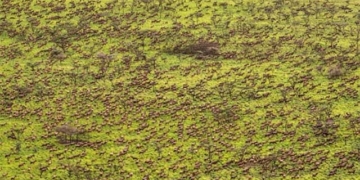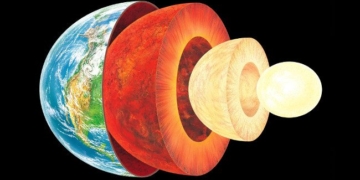Chilling discoveries regarding a massive amount of radioactive aluminum bombarding the Solar System 4.6 billion years ago indicate that the early Earth narrowly escaped disaster.
According to Live Science, scientists have uncovered traces of an ancient supernova that nearly blew away the Sun and its nascent planets, were it not for the molecular gas shield.
Supernova is a type of object resembling a round, bright molecular cloud, which is actually the remnant of a stellar explosion.

Graphic showing how the Sun and the protoplanetary disk protected the nascent Earth from supernovae – (Image: NRAO).
It is one of the most fearsome “monster” objects in the universe, with devastating shock waves and a vast amount of material ejected around it, capable of causing disasters for planets light-years away.
Astronomer Doris Arzoumanian from the National Astronomical Observatory of Japan and her colleagues discovered a “monster’s footprint” in the oldest meteorite fragments ever found: 4.6 billion years ago, they unexpectedly received a large influx of radioactive aluminum.
There is only one plausible explanation for the massive influx of radioactive aluminum into the Solar System: a supernova. Models suggest that this supernova was so close and powerful that it nearly blew apart the entire star system, potentially damaging its young protoplanetary disk.
If that scenario had played out, Earth may not have formed as it is today.
However, the findings also indicate an unexpected stroke of luck. Because it was still in its infancy, the Solar System retained a cocoon of molecular gas. This membrane inadvertently reduced the impact of shock waves from the explosion and the materials it ejected on the young star system.
Not only the Sun, but other stars are also born from massive gas filaments in dense molecular clouds.
Celestial bodies, such as large asteroids, formed in the first 100,000 years of the star system also broke apart, releasing meteorites rich in radioactive isotopes and reinforcing this cocoon alongside the shell from the very gas that birthed the star.
This cocoon helps protect the system from the harsh impacts of the universe, such as supernovae or nearby hot and massive “monster” stars, which could negatively affect the formation of planets like Earth.
According to the authors, this unique discovery reveals how star systems containing life-supporting planets can safely emerge amidst the harsh and chaotic environment of star nurseries.


















































